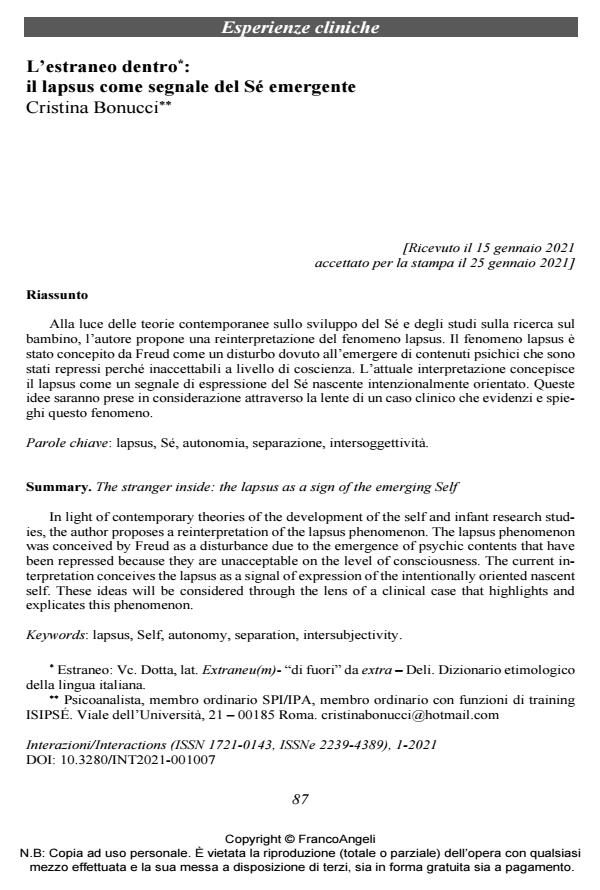L’estraneo dentro: il lapsus come segnale del Sé emergente
Titolo Rivista INTERAZIONI
Autori/Curatori Cristina Bonucci
Anno di pubblicazione 2021 Fascicolo 2021/1
Lingua Italiano Numero pagine 13 P. 87-99 Dimensione file 206 KB
DOI 10.3280/INT2021-001007
Il DOI è il codice a barre della proprietà intellettuale: per saperne di più
clicca qui
Qui sotto puoi vedere in anteprima la prima pagina di questo articolo.
Se questo articolo ti interessa, lo puoi acquistare (e scaricare in formato pdf) seguendo le facili indicazioni per acquistare il download credit. Acquista Download Credits per scaricare questo Articolo in formato PDF

FrancoAngeli è membro della Publishers International Linking Association, Inc (PILA)associazione indipendente e non profit per facilitare (attraverso i servizi tecnologici implementati da CrossRef.org) l’accesso degli studiosi ai contenuti digitali nelle pubblicazioni professionali e scientifiche
Alla luce delle teorie contemporanee sullo sviluppo del Sé e degli studi sulla ricerca sul bambino, l’autore propone una reinterpretazione del fenomeno lapsus. Il fenomeno lapsus è stato concepito da Freud come un disturbo dovuto all’emergere di contenuti psichici che sono stati repressi perché inaccettabili a livello di coscienza. L’attuale interpretazione concepisce il lapsus come un segnale di espressione del Sé nascente intenzionalmente orientato. Queste idee saranno prese in considerazione attraverso la lente di un caso clinico che evidenzi e spieghi questo fenomeno.
Parole chiave:Lapsus, Sé, autonomia, separazione, intersoggettività.
Cristina Bonucci, L’estraneo dentro: il lapsus come segnale del Sé emergente in "INTERAZIONI" 1/2021, pp 87-99, DOI: 10.3280/INT2021-001007